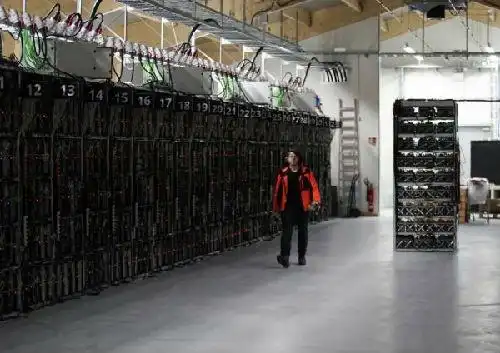The landscape of cryptocurrency mining has evolved dramatically over the last decade. As Bitcoin, Ethereum, and various altcoins continue to gain traction, the economics surrounding their extraction has become a focal point of interest. In Germany, a country known for its robust technological infrastructure and stringent energy policies, Bitcoin mining presents unique challenges and opportunities that appeal to both seasoned miners and newcomers alike. Understanding these dynamics is crucial for investors and businesses eyeing this burgeoning industry.

At its core, Bitcoin mining involves solving complex mathematical problems to validate transactions on the blockchain. This process consumes a considerable amount of energy, making the cost of electricity a major factor in determining profitability. In Germany, where energy prices are typically higher than in many other countries, miners must strategize carefully to ensure their operations remain viable. Nevertheless, Germany’s commitment to renewable energy has created pockets where miners can optimize their operations through sustainable means. Solar and wind energy farms, often producing excess power, can provide cheaper alternatives for miners seeking efficiency.
Moreover, the technological aspect cannot be overlooked. The type of mining rig employed plays a pivotal role in overall performance and cost-effectiveness. High-performance mining machines, designed specifically for Bitcoin extraction, are prevalent in the scene. Choices range from GPU-based rigs, known for their versatility, to ASIC miners, renowned for their raw computational power. The latter, while more expensive, often yields higher returns in environments where electricity prices can be mitigated, thanks to renewable sources.

The rise of hosting services for mining operations has further altered the mining economics game. Instead of investing heavily in hardware and facilities, hobbyists and investors can rent space in dedicated mining farms—these facilities provide the necessary infrastructure, power, and cooling systems to maximize efficiency. Germany has witnessed a surge in these hosting services, making it easier for individuals to partake in cryptocurrency mining without the cumbersome overhead of setup and maintenance.
Regulatory frameworks surrounding cryptocurrency also play an essential role in shaping the mining landscape in Germany. Unlike in some jurisdictions where the status of cryptocurrency is nebulous, Germany has adopted a clearer stance, treating Bitcoin and other cryptocurrencies as units of account. Miners, therefore, must navigate both the potential advantages of a stable regulatory environment and the constraints imposed by local laws concerning energy consumption and emissions.
The local community’s enthusiasm towards cryptocurrencies cannot be understated. As Bitcoin and Ethereum dominate popular conversation, the emergence of meme coins such as Dogecoin has infused the market with a novel approach—a combined sense of humor and an accessibility that appeals to a wider demographic. In terms of mining, this diversity translates into a broader range of choices for miners. Decisions around which coins to mine and how to optimize the mining rig for maximum returns have become crucial topics of debate, especially as market trends can shift rapidly.
The advent of decentralized finance (DeFi) has further complicated the landscape. DeFi projects, often built on Ethereum, offer not just alternative investment pathways but also novel mining opportunities through liquidity provision and yield farming. As miners in Germany seek to expand their portfolios, understanding how these decentralized platforms operate becomes ever-important, allowing them to leverage their mining capabilities in ways that are not limited strictly to traditional coin extraction.

In the ever-evolving landscape of cryptocurrency, Bitcoin remains a cornerstone. However, the diversification into other currencies—and the intertwining of those economies—suggests that the industry is tethered to a web of complex relationships. As miners reflect on their strategies, they may find themselves leaning towards innovative solutions, perhaps looking into hybrid approaches that take advantage of both ASIC and GPU rigs to optimize for both ours and eth, or even exploring the intricacies of hosting partnerships.
When reflecting on the future of Bitcoin mining in Germany, one cannot ignore the winds of change. The confluence of technology, regulatory environments, and community engagement will undoubtedly shape the trajectory of this industry. Miners will need to be agile, adapting not just to market fluctuations but also to emerging trends in energy consumption and technological evolution. The journey for Bitcoin miners—and indeed for all cryptocurrency enthusiasts—is only just beginning, and the potential remains vast, waiting to be explored with every new block mined.
One Response
This article intricately explores Germany’s unique energy landscape, regulatory frameworks, and market dynamics influencing Bitcoin mining profitability. Combining economic theory with real-world data, it reveals unexpected challenges and opportunities, shedding light on sustainable practices and future trends in the cryptocurrency sector.